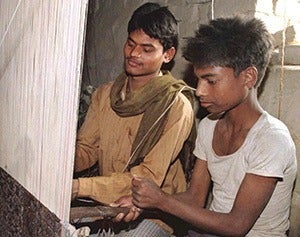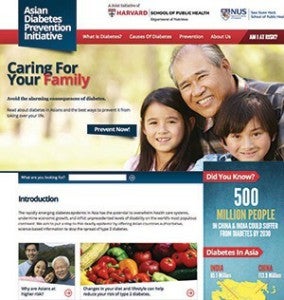Quick updates about the latest public health news from across the School and beyond.
Widowhood can be dangerous to your health
The popularly termed “widowhood effect” leaves a surviving spouse 66 percent more likely to die in the first three months after the death of a partner. The finding comes from new research led by HSPH, based on data from the U.S. Health and Retirement Study and published in the Journal of Public Health. The study’s senior author, SV Subramanian, professor of population health and geography in the Department of Social and Behavioral Sciences, offers some explanations: “It’s possible it’s a grief-related mechanism, or that providing care for the sick spouse causes illness in the surviving spouse, or that, as one’s spouse gets sicker, the surviving spouse stops taking care of his or her own health.”
Bile acid treatment could prevent type 1 diabetes
A naturally occurring bile acid can target a cellular stress mechanism in type 1 diabetes, according to a new study led by Harvard School of Public Health. In a surprising finding, treatment with the bile acid prevented the disease in mouse models. Senior author Gökhan S. Hotamisligil, chair of the Department of Molecular Metabolism, explains that such molecules could someday be used to “keep those at risk for type 1 diabetes disease-free for long periods of time, or even prevent the disease altogether.” The study appeared in Science Translational.
Keeping up with health care reform
 HSPH, in collaboration with the news organization Reuters, is now offering regular updates on the status of the Affordable Care Act and its influence on health care in the U.S.
HSPH, in collaboration with the news organization Reuters, is now offering regular updates on the status of the Affordable Care Act and its influence on health care in the U.S.
Catch the new web-based program “Health Reform Watch” at hsph.me/health-reform-watch.
Translating the talk between liver and muscle
Research conducted jointly by HSPH, Brigham and Women’s Hospital, and Harvard University’s Faculty of Arts and Sciences has revealed a novel mechanism that controls how fat-making in the liver communicates with fat-burning in skeletal muscle. “This finding uncovers a joint effort of the liver and muscle to maintain balanced fat production and burning—a biological process tailored to match the body’s energy demands and maximize fuel-burning efficiencies during the day versus night,” says Chih-Hao Lee, senior author and associate professor of genetics and complex diseases. The researchers hope that the study, which was published in Nature, generates greater understanding of normal metabolism in liver and muscle and paves the way for new therapies to treat fatty liver, obesity, and diabetes.
Could 2035 be the last year of global health disparities?
 Can world health disparities disappear within two decades? A major new report in The Lancet details an investment plan through which governments and private donors could reduce infectious, maternal, and child deaths in all countries to the levels of the best-performing countries in a single generation. The report, “Global Health 2035: A World Converging within a Generation,” projects that if its recommendations are followed, about 10 million lives could be saved by 2035 in low- and middle-income countries. Two of the report’s authors are from Harvard School of Public Health—HSPH Dean Julio Frenk and Sue J. Goldie, the School’s Roger Irving Lee Professor of Public Health and director of the Harvard Global Health Institute. “[G]ood investments in health are good in themselves, but they also promote economic growth,” Frenk told the Harvard Gazette. “The main idea is that by 2035, we can achieve what’s called a grand convergence, closing the most egregious equity gaps we still have between poor and rich populations around the world.”
Can world health disparities disappear within two decades? A major new report in The Lancet details an investment plan through which governments and private donors could reduce infectious, maternal, and child deaths in all countries to the levels of the best-performing countries in a single generation. The report, “Global Health 2035: A World Converging within a Generation,” projects that if its recommendations are followed, about 10 million lives could be saved by 2035 in low- and middle-income countries. Two of the report’s authors are from Harvard School of Public Health—HSPH Dean Julio Frenk and Sue J. Goldie, the School’s Roger Irving Lee Professor of Public Health and director of the Harvard Global Health Institute. “[G]ood investments in health are good in themselves, but they also promote economic growth,” Frenk told the Harvard Gazette. “The main idea is that by 2035, we can achieve what’s called a grand convergence, closing the most egregious equity gaps we still have between poor and rich populations around the world.”
Sick ecosystem = sick people
 Apocalyptic forest fires. Melting ice caps. Dammed rivers. Dwindling animal and plant habitats. Humans’ alterations of the earth’s natural systems pose grave risks to human health—especially among the world’s poor, who are singularly vulnerable to the health impacts that result from degraded natural systems. Samuel Myers, research scientist in HSPH’s Department of Environmental Health, and his colleagues in the HEAL (Health & Ecosystems: Analysis of Linkages) consortium have proposed a new health research framework that focuses on the health effects of environmental changes. In a perspective paper in the Proceedings of the National Academy of Sciences, the authors argue that such research can inform future policymaking for land use, resource allocation, and public health.
Apocalyptic forest fires. Melting ice caps. Dammed rivers. Dwindling animal and plant habitats. Humans’ alterations of the earth’s natural systems pose grave risks to human health—especially among the world’s poor, who are singularly vulnerable to the health impacts that result from degraded natural systems. Samuel Myers, research scientist in HSPH’s Department of Environmental Health, and his colleagues in the HEAL (Health & Ecosystems: Analysis of Linkages) consortium have proposed a new health research framework that focuses on the health effects of environmental changes. In a perspective paper in the Proceedings of the National Academy of Sciences, the authors argue that such research can inform future policymaking for land use, resource allocation, and public health.
Sounding the alarm on human rights abuses, discrimination
 A recent report by Siddharth Kara, a fellow with the François-Xavier Bagnoud (FXB) Center for Health and Human Rights, reveals pervasive human rights abuses in India’s carpet industry. The report, Tainted Carpets: Slavery and Child Labor in India’s Hand-Made Carpet Sector, describes illegal forced labor practices in production sites belonging to 172 carpet exporters. “[T]he working conditions uncovered were nothing short of subhuman,” the report notes, pointedly contradicting claims that slavery and child labor have been eliminated from the sector.
A recent report by Siddharth Kara, a fellow with the François-Xavier Bagnoud (FXB) Center for Health and Human Rights, reveals pervasive human rights abuses in India’s carpet industry. The report, Tainted Carpets: Slavery and Child Labor in India’s Hand-Made Carpet Sector, describes illegal forced labor practices in production sites belonging to 172 carpet exporters. “[T]he working conditions uncovered were nothing short of subhuman,” the report notes, pointedly contradicting claims that slavery and child labor have been eliminated from the sector.
A second report by the FXB Center, Accelerating Patterns of Anti-Roma Violence in Hungary, alerts the United Nations and the international community to persistent patterns of violent attacks and actions against the Roma (pejoratively called Gypsies). It argues that Hungary’s mounting incidence of hate crimes, racist propaganda, discrimination, and exclusionary ideologies demands measures to ensure the physical and psychological safety of the Roma and other minority groups.
Stemming the tide of diabetes in Asia
 The Asian Diabetes Prevention Initiative website—launched as a joint initiative between the Harvard School of Public Health Department of Nutrition and the Saw Swee Hock School of Public Health at the National University of Singapore—aims to give health professionals, public health practitioners, and the public quick and easy access to science-based information. The website serves as a factual resource about the causes of type 2 diabetes, its health consequences, and what can and must be done to decrease the prevalence of this disease on the world’s most populous continent.
The Asian Diabetes Prevention Initiative website—launched as a joint initiative between the Harvard School of Public Health Department of Nutrition and the Saw Swee Hock School of Public Health at the National University of Singapore—aims to give health professionals, public health practitioners, and the public quick and easy access to science-based information. The website serves as a factual resource about the causes of type 2 diabetes, its health consequences, and what can and must be done to decrease the prevalence of this disease on the world’s most populous continent.
For more information visit www.asiandiabetesprevention.org
Photo Credits: ©Purestock / Alamy; ©Strauss / Curtis / Corbis; ©Handout / REUTERS; ©REUTERS; Nicky Loh / REUTERS
Download a PDF of Spring 2014 Frontlines







